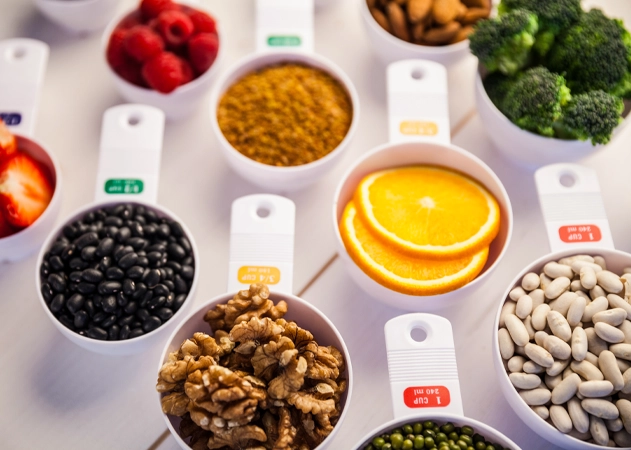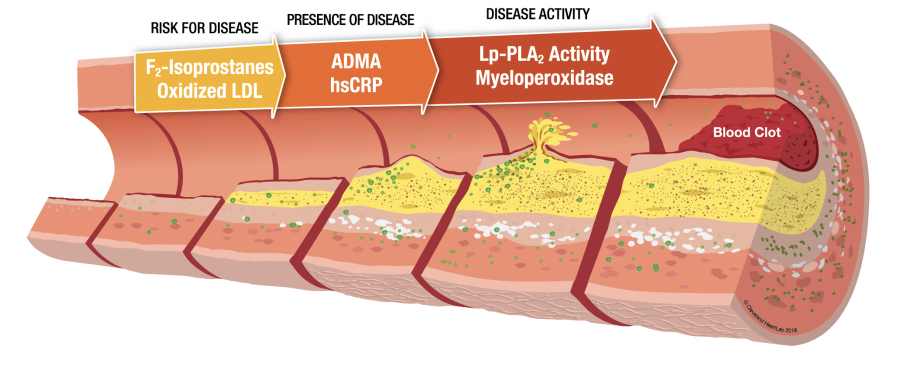Inflammation is a heavy word. Inflammation can be acute, chronic, localized, or systemic, and let’s be honest, quite frustrating. It can be frustrating when you don’t know where it’s stemming from, but what you can be sure of is that it can be influenced by what we choose to put into our bodies.
Here in the United States, we have long practiced what is called the “Standard American Diet”. The western-inspired diet typically contains a fair amount of food that are ultra-processed (e.g., TV/microwavable dinners), high-sugar (e.g., soda), high-saturated fat (e.g., butter), ultra-processed meat (e.g., bacon), and so on. The contents of most of these foods tend to lack vital nutrients (e.g., vitamin, minerals, fiber) necessary for growth, development, and achieving/maintaining health. I like to call these foods “energy-dense” mainly because they contain a fair number of calories to bring quick energy to our bodies, but ultimately lack the nutrient-density to provide for our bodies on a much deeper level.
I would be remiss not to mention that a lot of these foods tend to be more accessible and for most, more affordable, especially those living in areas in which “whole foods” are not really an option. It’s important to practice mindfulness in this regard. Mindfulness for those who may not have safe and reliable accessibility as well as the funds to shy away from these foods.
When it comes to inflammation and inflammatory-driven conditions (e.g., arthritis, stroke, back pain), we do need to be aware of what we’re choosing to put into our bodies. Knowing that the food we choose can greatly impact physical symptoms such as flare-ups is enough reason for people to do their best with changing their diet to reflect what I like to call “the anti-inflammatory diet”.
More specifically, these recommendations fall in line with the Mediterranean Diet. Now, this is almost the opposite of the Standard American Diet being that it promotes a whole food, nutrient-dense approach to eating. Let’s dig into the specifics.
Its platform runs on a plant-rich approach to eating. Notice how I didn’t say “plants-only” or “vegan” approach to eating. When I say plant-rich, I mean that this style of eating promotes more plant-based foods that are rich in an abundance of different vitamins and minerals, but also dietary fiber, antioxidants, and other phytonutrients that are beyond impactful for our health, especially inflammation.
A plant-rich approach to eating calls for a variety of different fruit (e.g., berries, avocado), vegetables (e.g., dark leafy greens, Brussel sprouts), whole grains (e.g., quinoa, oats), beans (e.g., chickpeas, black beans), lentils (e.g., green, red), nuts (e.g., walnuts, almonds), seeds (e.g., flax, chia), and so on.
What all these foods have in common is that they all contain dietary fiber, in varying amounts of course. When we eat dietary fiber, our “good” gut bugs are overjoyed with happiness because guess what? They get to eat! These gut bugs feed off the fiber we consume which then creates the production of what are called short-chain fatty acids (SCFAs). SCFAs have incredible anti-inflammatory properties, when in proper production, which can more than impactful on our body as they are connected to cytokine production. Cytokines are proteins that regulate inflammation in our body. SCFAs can aid with reducing pro-inflammatory cytokines and increasing anti-inflammatory cytokines.
A diet that lacks dietary fiber is a diet that can also lack SCFA production. By removing these nutrient- and fiber-dense foods in excess in your diet, your body’s ability to produce these powerful compounds shifts down tremendously thus lessening your body’s ability to achieve reduced and improved inflammation.
A crucial note to take into consideration that although these compounds can play a significant role in many people’s health, it’s important to understand that this is not a “one size fits all” approach. In certain cases, those who have irritable bowel disease (e.g., Crohn’s), acute gastrointestinal flare-ups (e.g., diverticulitis), other gastrointestinal conditions (e.g., SIBO), and so on may not benefit from added dietary fiber intake. In fact, it could exacerbate the existing issue. So, it’s very important in these circumstances to seek medical nutrition therapy from trained professionals.
What’s more, the anti-inflammatory style of eating promotes other key components in our diet which include favoring lean animal protein over red meat in excess along with choosing omega fatty acids over saturated- and trans-fat (e.g., fried food).
Lean animal protein would include chicken, turkey, and eggs, with an even larger focus on fish such as salmon and mackerel. Omega fatty acid-rich food would include avocados, nuts (e.g., walnuts), seeds (e.g., flax), certain cooking oils (e.g., extra virgin olive oil), and fatty fish (e.g., salmon). The combination of choosing lean animal protein over red meat with choosing omega fatty acids over saturated- and trans-fat is a one-two punch for helping reduce your body’s inflammatory response.
Unlike most “fad” diets and buzzy-sounding opinions in the media, the Mediterranean Diet has been incredibly well-studied and has numerous well-documented research outcomes in today’s literature as it pertains to benefiting our health, especially inflammatory-driven health outcomes.
All it takes is small, incremental changes that we can all partake in overtime that can greatly influence our health and health outcomes. If physically and financially able, following a nutrient-dense, whole-food approach as much as you can makes for an anti-inflammatory diet that packs a vitamin-, mineral-, antioxidant-, fiber-, and phytonutrient-punch, so, why not give it a try?
Inflammation is a heavy word. Inflammation can be acute, chronic, localized, or systemic, and let’s be honest, quite frustrating. It can be frustrating when you don’t know where it’s stemming from, but what you can be sure of is that it can be influenced by what we choose to put into our bodies.
Here in the United States, we have long practiced what is called the “Standard American Diet”. The western-inspired diet typically contains a fair amount of food that are ultra-processed (e.g., TV/microwavable dinners), high-sugar (e.g., soda), high-saturated fat (e.g., butter), ultra-processed meat (e.g., bacon), and so on. The contents of most of these foods tend to lack vital nutrients (e.g., vitamin, minerals, fiber) necessary for growth, development, and achieving/maintaining health. I like to call these foods “energy-dense” mainly because they contain a fair number of calories to bring quick energy to our bodies, but ultimately lack the nutrient-density to provide for our bodies on a much deeper level.
I would be remiss not to mention that a lot of these foods tend to be more accessible and for most, more affordable, especially those living in areas in which “whole foods” are not really an option. It’s important to practice mindfulness in this regard. Mindfulness for those who may not have safe and reliable accessibility as well as the funds to shy away from these foods.
When it comes to inflammation and inflammatory-driven conditions (e.g., arthritis, stroke, back pain), we do need to be aware of what we’re choosing to put into our bodies. Knowing that the food we choose can greatly impact physical symptoms such as flare-ups is enough reason for people to do their best with changing their diet to reflect what I like to call “the anti-inflammatory diet”.
More specifically, these recommendations fall in line with the Mediterranean Diet. Now, this is almost the opposite of the Standard American Diet being that it promotes a whole food, nutrient-dense approach to eating. Let’s dig into the specifics.
Its platform runs on a plant-rich approach to eating. Notice how I didn’t say “plants-only” or “vegan” approach to eating. When I say plant-rich, I mean that this style of eating promotes more plant-based foods that are rich in an abundance of different vitamins and minerals, but also dietary fiber, antioxidants, and other phytonutrients that are beyond impactful for our health, especially inflammation.
A plant-rich approach to eating calls for a variety of different fruit (e.g., berries, avocado), vegetables (e.g., dark leafy greens, Brussel sprouts), whole grains (e.g., quinoa, oats), beans (e.g., chickpeas, black beans), lentils (e.g., green, red), nuts (e.g., walnuts, almonds), seeds (e.g., flax, chia), and so on.
What all these foods have in common is that they all contain dietary fiber, in varying amounts of course. When we eat dietary fiber, our “good” gut bugs are overjoyed with happiness because guess what? They get to eat! These gut bugs feed off the fiber we consume which then creates the production of what are called short-chain fatty acids (SCFAs). SCFAs have incredible anti-inflammatory properties, when in proper production, which can more than impactful on our body as they are connected to cytokine production. Cytokines are proteins that regulate inflammation in our body. SCFAs can aid with reducing pro-inflammatory cytokines and increasing anti-inflammatory cytokines.
A diet that lacks dietary fiber is a diet that can also lack SCFA production. By removing these nutrient- and fiber-dense foods in excess in your diet, your body’s ability to produce these powerful compounds shifts down tremendously thus lessening your body’s ability to achieve reduced and improved inflammation.
A crucial note to take into consideration that although these compounds can play a significant role in many people’s health, it’s important to understand that this is not a “one size fits all” approach. In certain cases, those who have irritable bowel disease (e.g., Crohn’s), acute gastrointestinal flare-ups (e.g., diverticulitis), other gastrointestinal conditions (e.g., SIBO), and so on may not benefit from added dietary fiber intake. In fact, it could exacerbate the existing issue. So, it’s very important in these circumstances to seek medical nutrition therapy from trained professionals.
What’s more, the anti-inflammatory style of eating promotes other key components in our diet which include favoring lean animal protein over red meat in excess along with choosing omega fatty acids over saturated- and trans-fat (e.g., fried food).
Lean animal protein would include chicken, turkey, and eggs, with an even larger focus on fish such as salmon and mackerel. Omega fatty acid-rich food would include avocados, nuts (e.g., walnuts), seeds (e.g., flax), certain cooking oils (e.g., extra virgin olive oil), and fatty fish (e.g., salmon). The combination of choosing lean animal protein over red meat with choosing omega fatty acids over saturated- and trans-fat is a one-two punch for helping reduce your body’s inflammatory response.
Unlike most “fad” diets and buzzy-sounding opinions in the media, the Mediterranean Diet has been incredibly well-studied and has numerous well-documented research outcomes in today’s literature as it pertains to benefiting our health, especially inflammatory-driven health outcomes.
All it takes is small, incremental changes that we can all partake in overtime that can greatly influence our health and health outcomes. If physically and financially able, following a nutrient-dense, whole-food approach as much as you can makes for an anti-inflammatory diet that packs a vitamin-, mineral-, antioxidant-, fiber-, and phytonutrient-punch, so, why not give it a try?
























